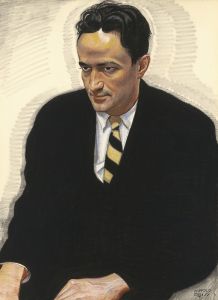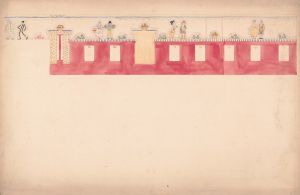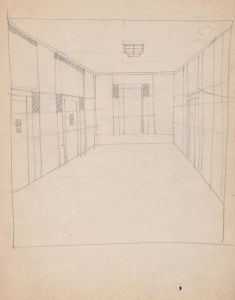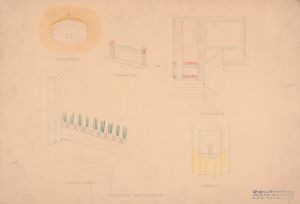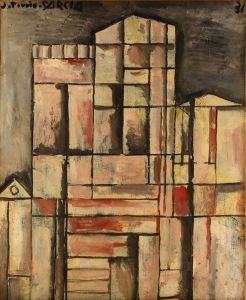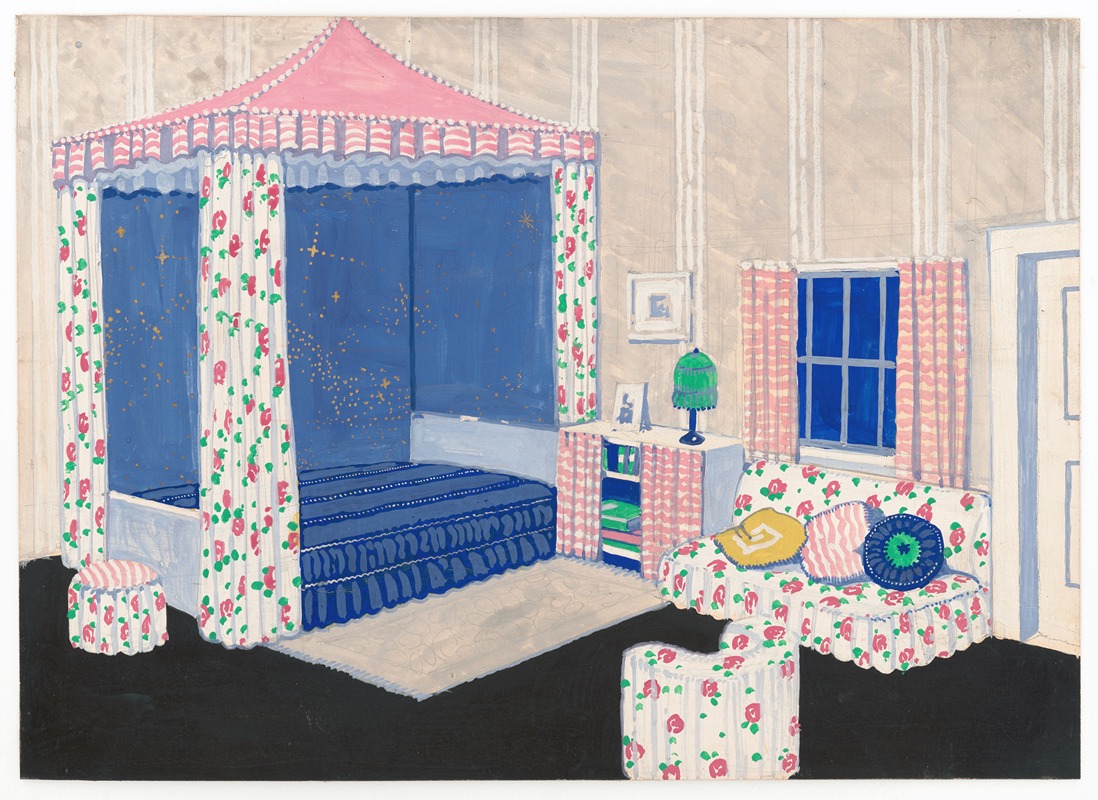
Design for unidentified bedroom with canopy bed.] [Interior perspective elevation
A hand-painted replica of Winold Reiss’s masterpiece Design for unidentified bedroom with canopy bed.] [Interior perspective elevation, meticulously crafted by professional artists to capture the true essence of the original. Each piece is created with museum-quality canvas and rare mineral pigments, carefully painted by experienced artists with delicate brushstrokes and rich, layered colors to perfectly recreate the texture of the original artwork. Unlike machine-printed reproductions, this hand-painted version brings the painting to life, infused with the artist’s emotions and skill in every stroke. Whether for personal collection or home decoration, it instantly elevates the artistic atmosphere of any space.
Winold Reiss was a German-American artist and designer known for his contributions to interior design and his distinctive style that combined elements of European modernism with American themes. Born in 1886 in Karlsruhe, Germany, Reiss immigrated to the United States in 1913, where he became a prominent figure in the art and design community. His work spanned various mediums, including painting, graphic design, and interior decoration.
Reiss's approach to interior design was characterized by his innovative use of color, form, and materials. He often incorporated vibrant hues and geometric patterns, drawing inspiration from diverse cultural sources. His designs were not only aesthetically pleasing but also functional, reflecting the modernist ethos of the early 20th century.
The artwork titled "Design for unidentified bedroom with canopy bed" is an interior perspective elevation created by Winold Reiss. This piece exemplifies Reiss's skill in rendering detailed and imaginative interior spaces. Although specific details about this particular design are scarce, it is consistent with Reiss's broader body of work, which often featured richly decorated interiors with an emphasis on harmony and balance.
Reiss's designs frequently included elements such as canopy beds, which were popular in the early 20th century for their elegance and the sense of privacy they provided. The use of a canopy bed in this design suggests a focus on creating a luxurious and intimate atmosphere within the bedroom. Canopy beds also allowed for creative expression through the choice of fabrics and drapery, which could be tailored to complement the overall color scheme and style of the room.
Throughout his career, Reiss worked on a variety of projects, including commercial spaces, private residences, and public buildings. He was particularly noted for his work on the interiors of restaurants and hotels, where his ability to create inviting and visually striking environments was highly valued. Reiss's designs often featured custom furniture and fixtures, designed to enhance the unique character of each space.
In addition to his work as a designer, Winold Reiss was also an accomplished portrait artist. He is perhaps best known for his portraits of Native Americans, which he created during his travels in the American West. These portraits were celebrated for their sensitivity and attention to detail, capturing the individuality and dignity of his subjects.
Reiss's contributions to the field of design were significant, and his work continues to be studied and appreciated for its artistic merit and historical importance. His ability to blend different cultural influences and his commitment to creating beautiful, functional spaces have left a lasting impact on the world of interior design.
While specific information about the "Design for unidentified bedroom with canopy bed" is limited, it remains a testament to Winold Reiss's talent and vision as a designer. His legacy is preserved through his diverse body of work, which continues to inspire designers and artists today.





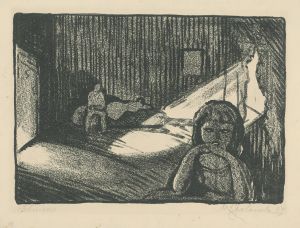
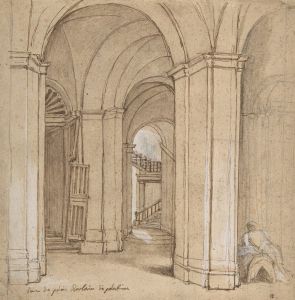
![Graphic designs for the Presidents Room of the ‘Knickerbocker’ Longchamps Restaurant, 41st Street and 1450 Broadway, New York, NY.] [Portrait of Lincoln](/imgs/249258/s/winold-reiss-graphic-designs-for-the-presidents-room-of-the-knickerbocker-longchamps-restaurant-41st-street-and-1450-broadway-new-york-ny-portrait-of-lincoln-e2174e99.jpg)
![Design drawings for the Theodore Weicker Apartment Building.] [Study for metalwork gate](/imgs/249281/s/winold-reiss-design-drawings-for-the-theodore-weicker-apartment-building-study-for-metalwork-gate-8a05d5e9.jpg)
![Design for unidentified restaurant, possibly Dunhall’s Restaurant, New York, NY.] [Wall treatment, sketch 2](/imgs/249303/s/winold-reiss-design-for-unidentified-restaurant-possibly-dunhalls-restaurant-new-york-ny-wall-treatment-sketch-2-fcb08634.jpg)
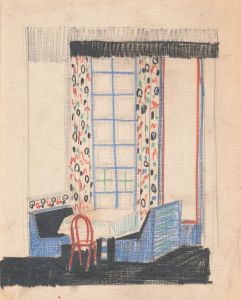
![Proposed decorations for Fisher Building, Detroit.] [Theatre foyer 109 & adjacent galleries](/imgs/249387/s/winold-reiss-proposed-decorations-for-fisher-building-detroit-theatre-foyer-109-adjacent-galleries-88035d64.jpg)

![Miscellaneous small sketches for inlaid table tops.] [Design with red and blue cubic motif](/imgs/249439/s/winold-reiss-miscellaneous-small-sketches-for-inlaid-table-tops-design-with-red-and-blue-cubic-motif-47eb56d2.jpg)
